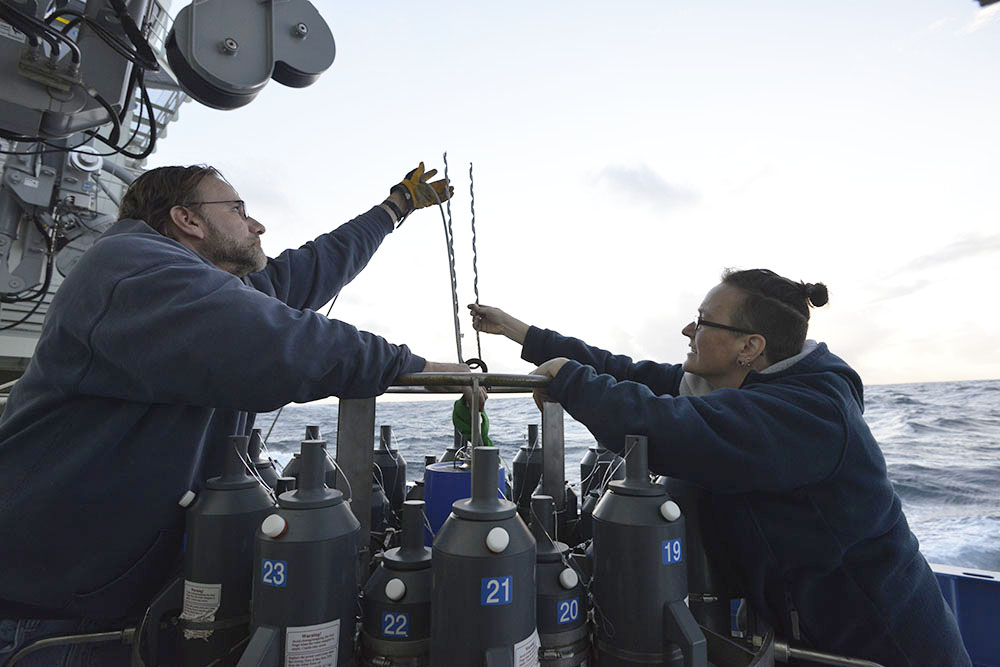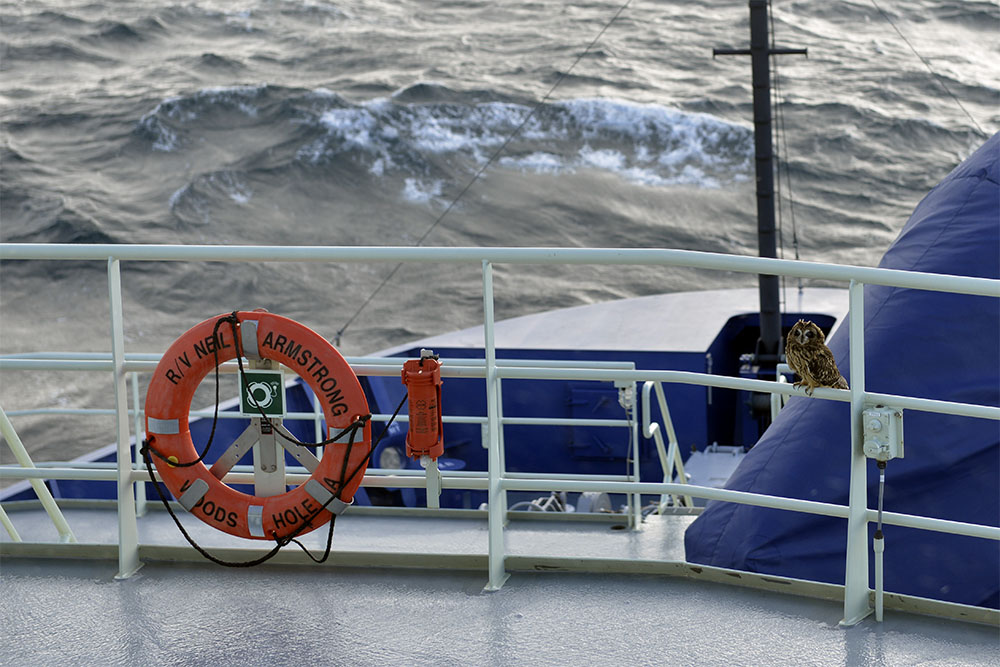Departure from Anacortes, Wash., marked the beginning of Neil Armstrong’s maiden voyage and, for the crew, a return to the rhythms of life at sea, plus a surprise guest.

Technicians Chris Griner and Amy Simoneau prepare the ship's CTD for winch tests in deep water. (Photo by Ken Kostel, Woods Hole Oceanographic Institution)

Knorr has had a long history of owls hitching rides far from shore—a tradition that Armstrong continued on its second day from port. (Photo by Ken Kostel, Woods Hole Oceanographic Institution)

Day two brought better weather, something the crew never seems to tire of. (Photo by Ken Kostel, Woods Hole Oceanographic Institution)

The first day out from Anacortes gave the crew a chance to learn how their new home took the weather. (Photo by Ken Kostel, Woods Hole Oceanographic Institution)

Armstrong captain Kent Sheasley eases Armstrong away from shore. (Photo by Ken Kostel, Woods Hole Oceanographic Institution)

Third mate Josh Woodrow and WHOI port engineer Hank Ayers cast off with a little help from a group of Anacortes residents. (Photo by Ken Kostel, Woods Hole Oceanographic Institution)

Several residents from Anacortes came down to the dock to see Neil Armstrong depart. (Photo by Ken Kostel, Woods Hole Oceanographic Institution)
Departure from Anacortes, Wash., marked the beginning of Neil Armstrong’s maiden voyage and, for the crew, a return to the rhythms of life at sea, plus a surprise guest.
The research vessel Neil Armstrong is named for the American hero whose “one small step” provided humanity with a new perspective on our planet and is operated by the Woods Hole Oceanographic Institution. Read more »
Funding for R/V Neil Armstrong comes from the Office of Naval Research, the National Science Foundation, and the National Atmospheric and Oceanic Administration.
 WHOI is the world's leading non-profit oceanographic
research organization. Our mission is to explore and understand the ocean and to
educate scientists, students, decision-makers, and the public.
WHOI is the world's leading non-profit oceanographic
research organization. Our mission is to explore and understand the ocean and to
educate scientists, students, decision-makers, and the public.
